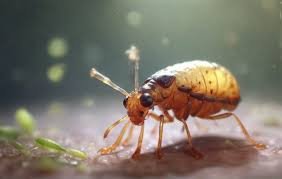Introduction: Why Flea Identification and Control Matters
Fleas are more than just a nuisance; these tiny, wingless insects can cause discomfort for both pets and humans, and in some cases, transmit serious diseases. Understanding flea identification and control is crucial for keeping your home and pets safe. This guide covers how to identify fleas, their life cycle, signs of infestation, and effective prevention strategies to keep your home flea-free.
What Are Fleas?
Fleas are small, blood-feeding parasites that thrive on warm-blooded animals like dogs, cats, and even humans. They can jump long distances, reproduce quickly, and hide in carpets, bedding, and furniture.
Image suggestion:
- Alt: “flea identification on cat fur”
The Flea Life Cycle: Why Control Is Difficult
To understand flea identification and control, you need to know their life cycle:
- Eggs – Laid in fur or bedding.
- Larvae – Hide in dark, moist areas.
- Pupae – Protective cocoon stage.
- Adult Fleas – Jump onto hosts and begin feeding.
Since only 5% of a flea population are adults, treating pets alone won’t stop an infestation—you need to address the entire environment.
Image suggestion:
- Alt: “flea life cycle identification and control”
Signs of Flea Infestation
- Constant scratching or biting in pets
- Tiny black specks (“flea dirt”) in fur or bedding
- Red, itchy bites on ankles or legs
- Spotting adult fleas on pets
Image suggestion:
- Alt: “flea bite symptoms and treatment”
Flea Identification and Control: Effective Strategies
1. On Pets
- Use veterinarian-approved flea treatments (spot-on, oral, or collars).
- Regularly bathe and groom your pets.
- Consult a vet if infestations persist (ASPCA guide).
Image suggestion:
- Alt: “flea control for pets”
2. In the Home
- Vacuum carpets, furniture, and cracks daily.
- Wash bedding at high temperatures.
- Use flea sprays or powders if necessary.
Image suggestion:
- Alt: “home flea infestation control”
3. Outdoor Prevention
- Keep your yard trimmed.
- Remove piles of leaves or debris where fleas thrive.
- Limit contact with stray or wild animals.
Why Flea Identification and Control Is Important
Failing to address fleas can lead to:
- Skin infections and allergies in pets
- Anemia in severe infestations
- Risk of flea-borne diseases (CDC resource)
Correctly distinguishing fleas from other pests and applying the right treatment ensures healthier pets, safer homes, and peace of mind.
Internal Resources (Suggested Links)
- How to Get Rid of Bed Bugs Naturally
- Best Tick Prevention Tips for Dogs
- Safe Pest Control for Homes with Children
Conclusion
Flea identification and control requires vigilance, consistency, and a combination of pet care, home treatment, and prevention strategies. By understanding the flea life cycle, spotting early signs of infestation, and applying the right solutions, you can protect both your pets and your household from these persistent parasites.





